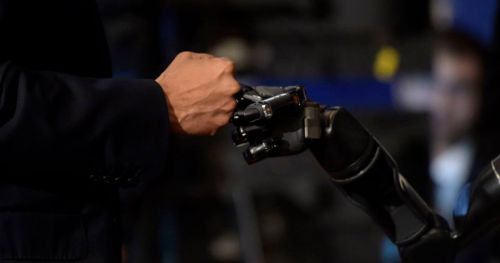Providing a Sense of Touch through a Brain-Machine Interface
A DARPA-funded research team has demonstrated for the first time in a human a technology that allows an individual to experience the sensation of touch directly in the brain through a neural interface system connected to a robotic arm. By enabling two-way communication between brain and machine—outgoing signals for movement and inbound signals for sensation—the technology could ultimately support new ways for people to engage with each other and with the world.
The work was supported by DARPA’s Revolutionizing Prosthetics program, and performed by the University of Pittsburgh and the University of Pittsburgh Medical Center.
Source: DARPAtv
Read more: darpa.mil & yahoo.com
– Prosthetics
– Paralyzed
– Mind-Controlled Technology
– Brain-Computer Interfaces
– Implants
– Cyborgization
– Neurotechnologies
– Neuroscience Books
– The Future of Medicine
– The Future of Robotics
– DARPA
– Will Robots Get Touch-Sensitive Artificial Skin?
– Prosthetic Hand Will Provide Amputees With Real-time Sensory Feedback
– BMBI Enables Monkey’s Brain To Control And Feel Virtual Body
– A Robot Arm Can Move And Detect Objects By Touch
– Teslasuit: VR Suit With Haptic Feedback
– Gloveone: Feel Virtual Reality

| Tweet |










